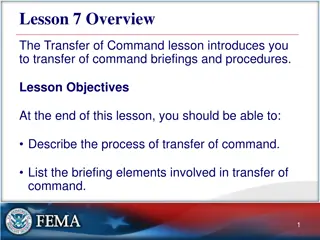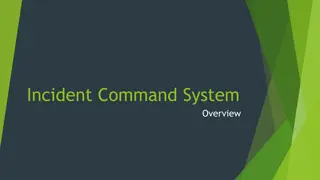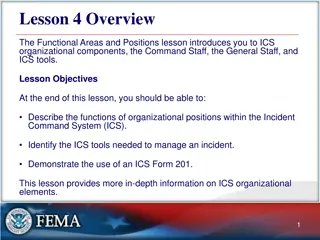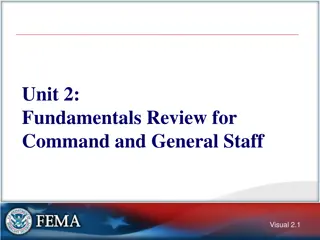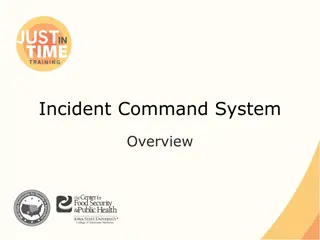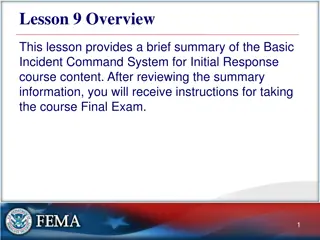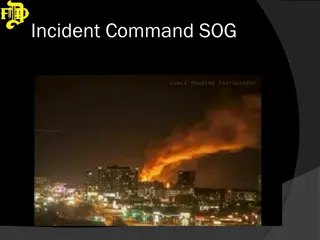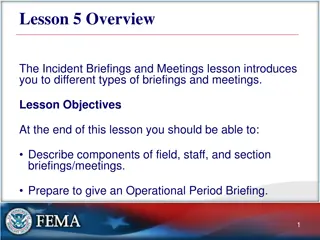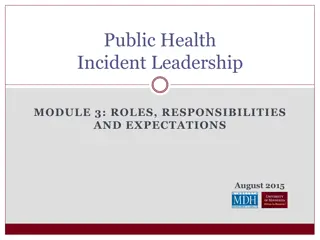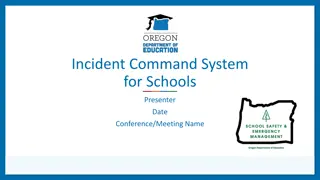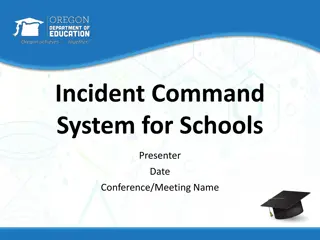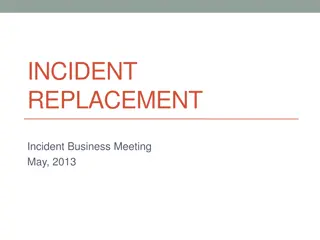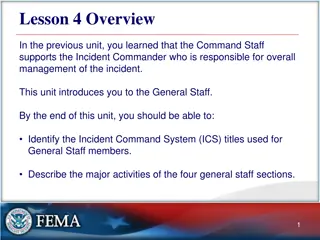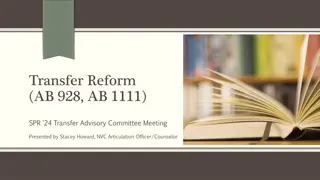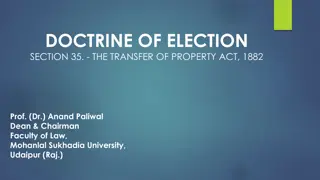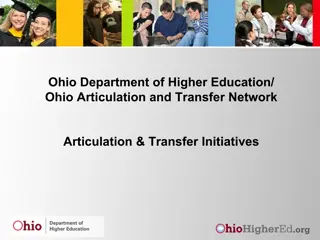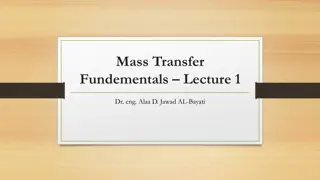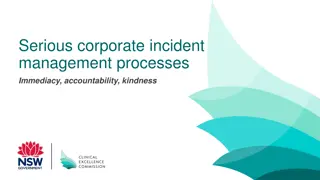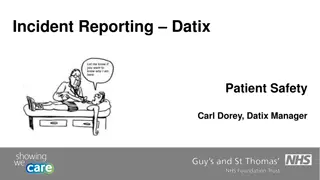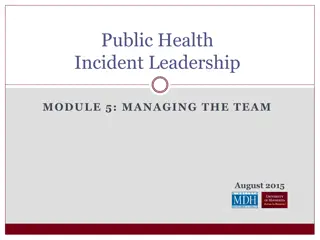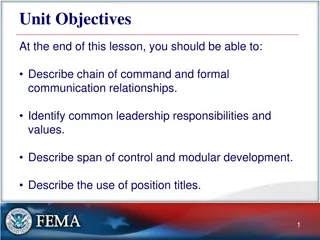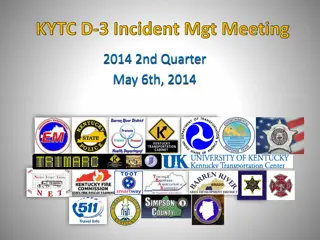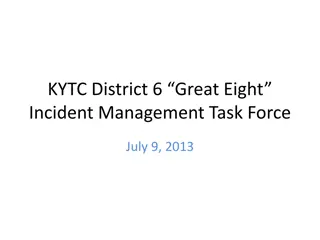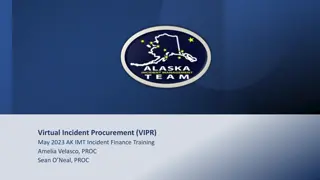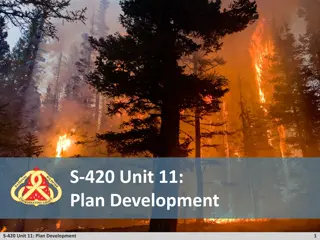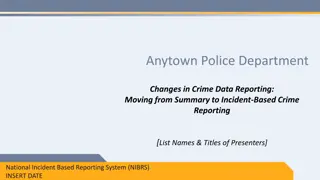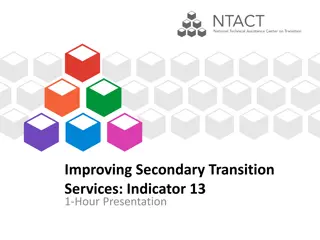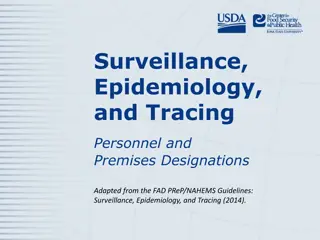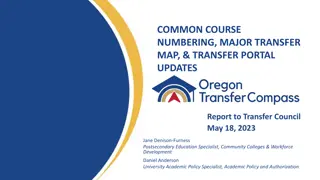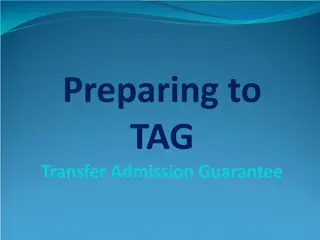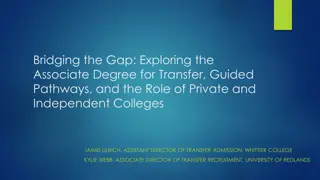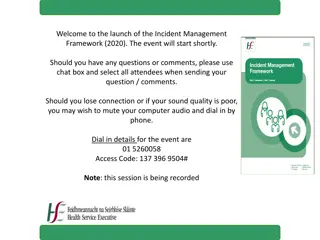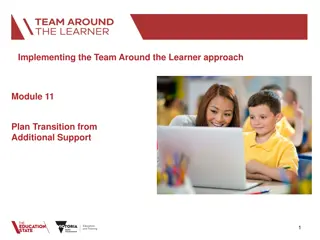Transition and Transfer of Incident Command
Ensuring effective transition and transfer of incident command is crucial for incident management. This involves activities such as demobilization planning, transfer of command planning, incident package creation, and more. Detailed plans need to be in place to facilitate a smooth handover of authority and resources between Incident Management Teams. Safety considerations and coordination with all stakeholders are essential for successful command transitions.
Download Presentation

Please find below an Image/Link to download the presentation.
The content on the website is provided AS IS for your information and personal use only. It may not be sold, licensed, or shared on other websites without obtaining consent from the author. Download presentation by click this link. If you encounter any issues during the download, it is possible that the publisher has removed the file from their server.
E N D
Presentation Transcript
S-420 Unit 13: Transition and Transfer of Command S-420 Unit 13: Transition and Transfer of Command 1
Objectives Students will be able to: Discuss the activities that occur during the transition and transfer of command. Discuss when planning for transition and transfer of command begins. S-420 Unit 13: Transition and Transfer of Command 2
Introduction The primary focus is to ensure that an effective transfer of command of incident management occurs and safety is considered in all functional areas. Planning for the transition and transfer of command is part of strategic planning and should be discussed at each strategy meeting. S-420 Unit 13: Transition and Transfer of Command 3
Transition and Transfer of Command Activities that may occur include: Demobilization plan. Transfer of command plan. Incident package. AA briefing. AA Evaluation of IC/IMT. IMT AAR. S-420 Unit 13: Transition and Transfer of Command 4
Demobilization Plan The demobilization plan details how, over time, resources will be released from an incident. This plan is the responsibility of the PSC working in close conjunction with the OSC. There is no standardized demobilization plan however, it should be detailed enough so that it can be executed, yet flexible enough to respond to changes in the incident. S-420 Unit 13: Transition and Transfer of Command 5
Transfer of Command The transfer of command plan details how one IMT will transfer delegated authority for the management of the incident to another IMT or IC. This is the responsibility of the IC. However, all C&G members will contribute to the plan and coordination with the host unit is critical. S-420 Unit 13: Transition and Transfer of Command 6
Transfer of Command Transfer of command takes place only after the incoming IC signs a Delegation of Authority with the AA. The AA must approve the date and time that transition will occur. Transfer of command should take place at the start of an operational period when possible. Chapter 11 of the Interagency Standards for Fire and Aviation Operations has further information. S-420 Unit 13: Transition and Transfer of Command 7
Incident Package Chapter 11 of the Interagency Standards for Fire and Aviation Operations also outlines records management requirements for federal incidents. Other jurisdictions may have other requirements and the AA should be consulted to ensure their expectations are being met. S-420 Unit 13: Transition and Transfer of Command 8
Agency Administrator Briefing This is sometimes referred to as the out-briefing. This is the final opportunity for the IMT to provide the AA with a thorough understanding of how the IMT managed the incident. Nothing in this out-briefing should be a surprise for either the IMT or the AA. The PSC facilitates this meeting however all C&G provide input into this meeting. It is critical that this meeting be an open and honest exchange between the IMT and the AA. S-420 Unit 13: Transition and Transfer of Command 9
AA Evaluation of IC/IMT This evaluation is intended to provide performance feedback to the IMT; acknowledging high performance as well as any deficiencies that may exist. Chapter 11 of the Interagency Standards for Fire and Aviation Operations has further information. S-420 Unit 13: Transition and Transfer of Command 10
IMT After Action Review The same benefits of conducting AAR on crews or engines apply to the IMT environment as well. IMTs will facilitate these AARs in different ways. C&G members are encouraged to conduct AARs with their section. The lessons learned are then shared by each C&G during the team AAR. Specific areas for improvement should be identified, especially if the AA notes any specific deficiencies in their evaluation of the team. S-420 Unit 13: Transition and Transfer of Command 11
Objectives Students will be able to: Discuss the activities that occur during the transition and transfer of command. Discuss when planning for transition and transfer of command begins. S-420 Unit 13: Transition and Transfer of Command 12


